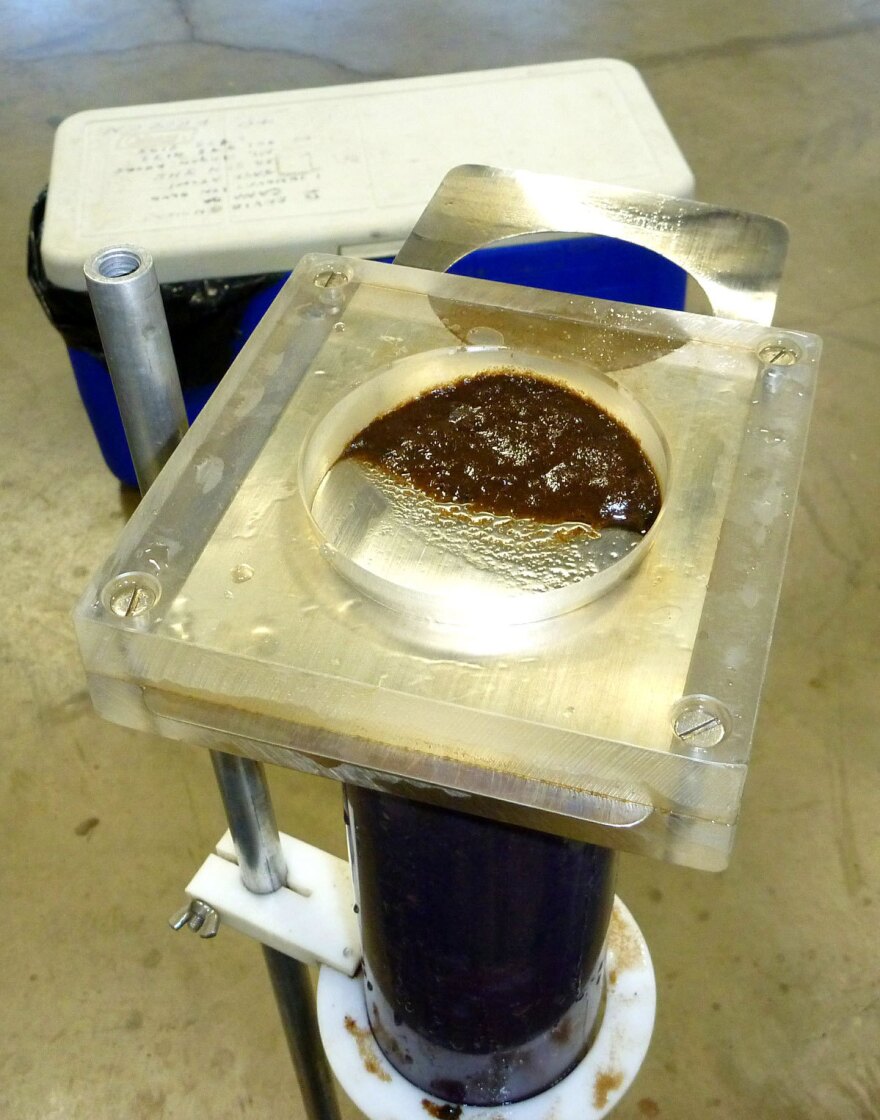Canadian researchers have used the mud at the bottom of lakes like a time machine to show that tar sands oil production in Alberta, Canada, is polluting remote regional lakes as far as 50 miles from the operations.
An increasingly large share of U.S. oil comes from Canada's tar sands. There are environmental consequences of this development, but until recently, Canadian regional and federal governments left it to the industry to monitor these effects.
A new study follows other recent rigorous scientific studies that have found ecological effects that had been missed by the industry's monitoring.
The forested part of Western Canada, where tar sands oil is produced, is so rich with the thick, asphalt-like stuff that you can actually see it coming out of the ground all over the place. That's made it easy for industry to claim that contaminants in waterways could have gotten there naturally.
To try to get at the truth, researchers had to find a way to go back in time.
"Twenty-four hours a day, 365 days a year, mud is accumulating at the bottom of a lake," says John Smol, a biology professor at Queens University in Ontario. "It's like a history book. The deeper you, go the older it is."
Smol and scientists from Canada's federal environment agency analyzed mud from the bottom of several lakes. They saw that the level of contaminants increased after the 1960s and 1970s, when tar sands development started. Then it rose sharply in recent years when tar sands production spiked.
The scientists also demonstrated that the source was not natural. "So the types of contaminants could also sort of point the finger, if you like, at 'Yep, it's coming from the tar sands operations,' " says Smol, an author of the paper published this week in the Proceedings of the National Academy of Sciences.

The contaminants the researchers found are called polycyclic aromatic hydrocarbons, or PAHs — air pollutants that come from pulling the tar stands oil out of the ground in surface mines and stripping the sand and other materials away in big processing plants called upgraders. These toxic chemicals are linked to cancer and other serious health problems. The levels found in the lakes were 2.5 to 23 times what they were 50 years ago but are not high enough to trigger obvious environmental or health problems, says Smol.
"I'm not saying that these lakes are toxic pools. The contaminants in these lakes are now about the same level you might see in a lake in an urban, like a city, setting," says Smol.
Smol says he worries that as the industry ramps up production, the contamination will get worse, and he's hoping that the industry will install more pollution controls to prevent this.
This pollution wasn't picked up by the industry-funded monitoring program that was supposed to track environmental risks from tar sands over recent decades.
Studies published a few years ago by University of Alberta professor David Schindler were the first to tie the industry's air pollution to contamination of waterways. The new study shows that the contamination covers a broader area, and it is the first to track the pollution levels through history.
Schindler's research prompted the federal and regional governments to reconsider whether they should have been letting industry monitor the environmental effects of its own operations.
Schindler says the old monitoring program sent his blood pressure up for decades.
"It's a very disgusting history, I would say, that we now know that we've spent 30 years and millions of dollars on a monitoring program that has yielded very little of use," Schindler says.
Schindler says because the industry's monitoring failed to show the evidence that the recent studies have shown, the industry avoided adopting cleaner technologies. He hopes that in response to the new research — and more that is on the way — the governments will require the industry to reduce its pollution.
"The attitude has been, 'Oh, this is a remote area; nobody is going to care.' I think that's going to change," Schindler says.
But industry spokesman Travis Davies said that the pollution levels shown by the new study aren't high enough to suggest that the industry needs to change. "You needed to find whether this has an impact — a negative impact — on the environment. And this study shows it doesn't," said Davies, issues manager for the Canadian Association of Petroleum Producers.
Davies says more studies are needed to pinpoint which aspect of the industry is responsible for the levels of pollution that were found.
"Because until you know that, you don't know where to apply the technology, you don't know where to change your process, you don't know what regulations to change," he says. "So there's not a lot of point of running out and spending billions of dollars unless you know that it's going to work."
The Canadian government pledged last fall to create a new monitoring program that is independent from industry and the government to try to get more answers.
Copyright 2021 NPR. To see more, visit https://www.npr.org. 9(MDAxNzg0MDExMDEyMTYyMjc1MDE3NGVmMw004))








